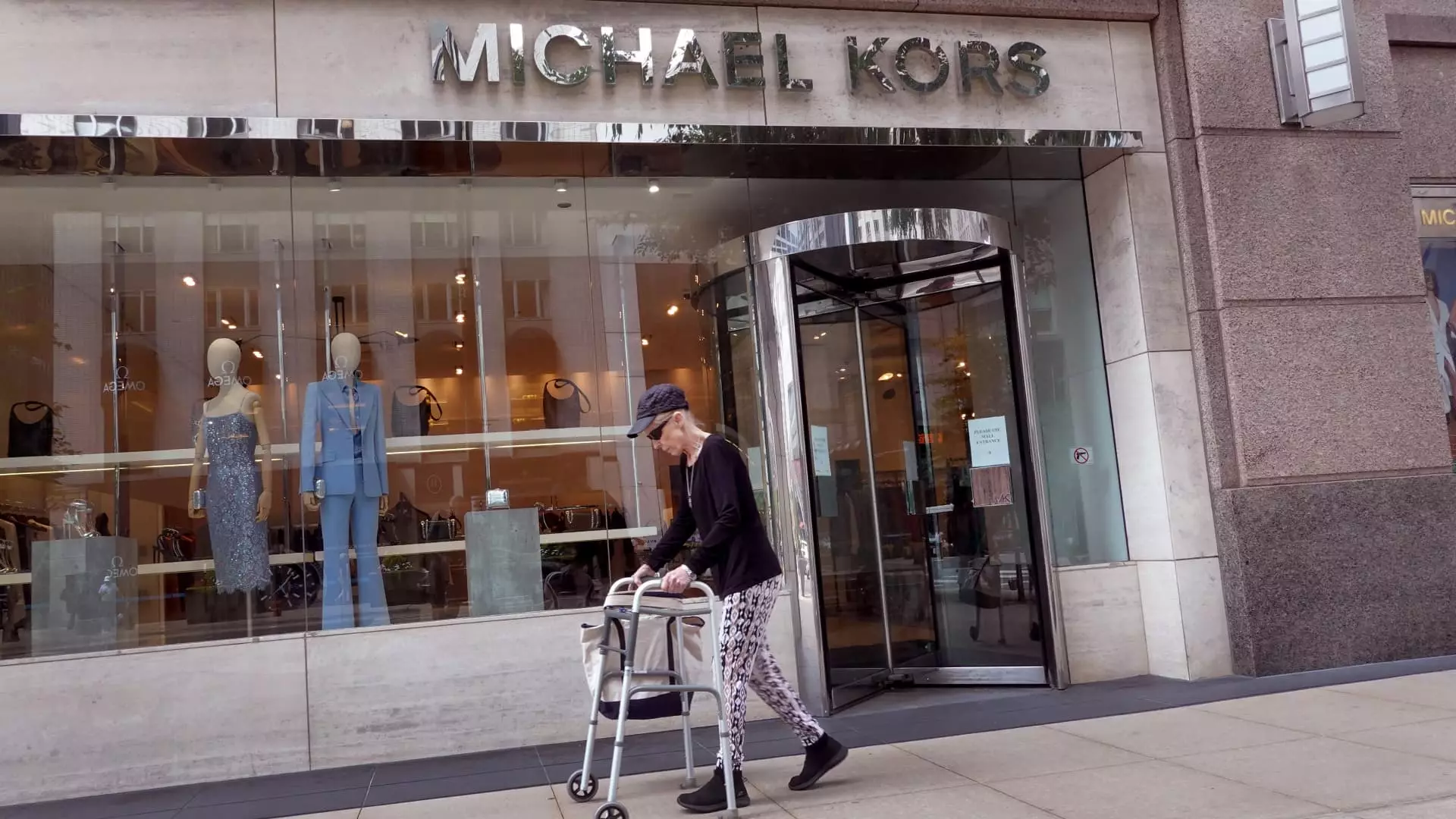In a dramatic turn of events, the highly anticipated merger between Capri Holdings and Tapestry, two titans of the U.S. luxury fashion industry, was mutually called off on Thursday following a successful lawsuit by the Federal Trade Commission (FTC). This strategic decision marks a significant pivot for both companies, as they realign their focus towards their individual futures rather than the collective ambition of creating a mega luxury conglomerate. The FTC’s move underscores the increasing regulatory scrutiny on large mergers and acquisitions, raising questions about market consolidation and its implications for consumers and employees alike.
Initially announced in August 2023, the proposed merger was set to combine Tapestry’s renowned brands—Coach, Kate Spade, and Stuart Weitzman—with Capri’s portfolio, which includes Versace, Jimmy Choo, and Michael Kors, creating a powerful entity worth an estimated $8.5 billion. However, the FTC intervened, arguing that the merger would reduce competition in the luxury market, adversely impacting consumer benefits and employee welfare. The agency’s stance was validated last month when a federal judge ruled in favor of the FTC’s block on the merger, signaling an era where regulatory approval is not guaranteed for large-scale industry consolidations.
As pressures mounted, both companies recognized the futility in pursuing a merger that lacked regulatory support and opted for a path of separation, announcing their decision in a joint statement. Capri’s CEO, John Idol, expressed a forward-looking approach, highlighting confidence in the enduring growth potential of Capri’s luxury brands. Meanwhile, Tapestry’s leadership swiftly pivoted to emphasize its ability to thrive independently.
The cessation of the merger comes with financial ramifications, especially for Tapestry, which announced plans to redirect its focus towards organic growth and shareholder value enhancement. In a move signaling confidence in its future, Tapestry disclosed intentions to initiate a $2 billion share repurchase plan, funded through a combination of existing cash and debt. This strategic action not only reflects Tapestry’s commitment to maximizing shareholder returns but also demonstrates an agile response to shifting market conditions.
The financial markets responded to the news with a mixed bag of outcomes. While Tapestry’s stock rose in pre-market trading—indicating a perceived victory for the company—Capri’s share value took a significant hit, reflecting investor concerns over the company’s declining brand performance, particularly Michael Kors. As analysts increasingly questioned the viability of the merger, warnings about potential overvaluation loomed large, highlighting the necessity for both companies to reassess their growth strategies in the absence of a merger.
Looking ahead, both Capri and Tapestry face unique challenges as they navigate the luxury market landscape independently. For Capri, the focus will be on rejuvenating its flagship brand, Michael Kors, which has struggled to maintain its sales momentum. CEO John Idol has indicated that several strategic initiatives will be rolled out to restore brand desirability across Capri’s portfolio, including impactful marketing campaigns, compelling product offerings, and an enhanced omni-channel consumer experience.
On the other hand, Tapestry’s leadership is poised to leverage its existing strengths and pursue avenues for organic growth. The firm’s consensus appears to center around fortifying its market position and exploring innovative paths to expand its brand presence without the constraints of merger complexities.
The unraveling of the Capri-Tapestry merger signifies more than just the end of a potential collaboration; it acts as a pivotal moment for the luxury fashion industry. As regulatory bodies ramp up scrutiny over market dynamics, both companies must adapt their strategies to thrive in a competitive landscape. The challenge lies not solely in recovering from the merger collapse but in transforming this setback into an opportunity for renewed growth and brand revitalization. Ultimately, the future of these iconic brands will depend on their ability to innovate and resonate with evolving consumer expectations in the ever-changing realm of luxury fashion.


Leave a Reply